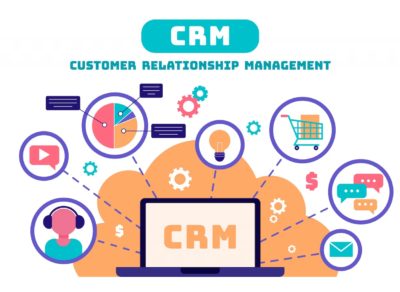
The only guide to digital maturity model for banks you’ll need
Do you need a strategic plan to help your banking industry stay up-to-date with the latest innovations in digital technologies and systems? We have just what you’re looking for: a digital maturity model tailored specifically for banks.
In this blog post, you will learn how to assess where your bank stands right now, what changes are necessary to achieve a high level of digital maturity, and which tools can be used to implement the best practices. Keep reading and discover our comprehensive guide to achieving successful digital transformation in the banking space!
1. What is the Digital Maturity Model?
The Digital Maturity Model is a framework for assessing an organization’s current level of digital maturity and for creating a path for the future. The model was created in collaboration between Google and Boston Consulting Group and has four stages: Nascent, Emerging, Connected, and Multi-Moment. Data demonstrate that boosting digital maturity increases marketing effectiveness and efficiency.

It quickly stands out as a plot of efficacy vs efficiency. This makes a lot of sense. The idea is that as you advance through the levels, you’ll get more efficient and effective, which is a win-win. This diagram can be used to display a “surface reading” or to plot the maturity level of your company within each domain. In other words, you may map the maturity of your company very precisely or at a more general, aggregated level for your organization as a whole.
2. The Four Stages of Digital Maturity
2.1 Nascent
The earliest stage is called nascent (nascent). We frequently see organizations that are just getting started in digital marketing live here, as you may have guessed, and we have some clients at this stage. As a result, the primary areas of focus during this stage are data trust and organizational collaboration. This stage is more concerned with organizational issues than with technical issues.
Organizations in this stage typically have many data silos or even no data collection, low team collaboration, and little or no trust in data quality. Executive buy-in is important at all stages, but it is especially important at this stage to position the organization for success beyond this stage, i.e. the current process and structure have gotten them to where they are now, but they will most likely need to change to grow and succeed.
Giải pháp của SmartOSC Fintech BACKBASE DIGITAL BANKING, BUY NOW PAY LATER, LOS, CDP, EKYC, DIGITAL ONBOARDING
2.2 Emerging
The stage after nascent is emerging. Many of our clients fall into this category. At this stage, the most important areas of focus for organizations are living in the data democracy that began with the alignment of KPIs and lexicons across business units, adopting a test-and-learn philosophy, and documenting the organizational processes. At this point, we can see the balance shifting from an organizational focus to a technology focus.
Organizations that recognize the importance of data sharing across teams but speak different languages are also common. At this stage, aligning on lexicons or the language used and KPI definitions is critical. Around this time, organizations begin to see the need for process documentation in order to scale, and agencies are typically brought on board.
Finally, adopting a test-and-learn philosophy allows the company to try new things and both fail and succeed at them. The and-learn component of test-and-learn is emphasized. The ability to learn and communicate this knowledge is critical in this situation.
2.3 Connected

Connected comes after the Emerging stage. Similar to Emerging, we see a significant number of our clients in this stage. This is where the business truly begins to fire on all cylinders, as data is not only shared across teams, but it is also used effectively across teams to produce better results tied back to revenue, sales proxies, or the holy grail, profit.
Thus, within this stage, the areas of focus are platform integration with a focus on activation across them, tying online to offline data and vice versa, and deeper cross-functional teams and agencies. This is also the point at which technology takes precedence over organizational concerns, and considerations for cloud solutions begin.
Connecting (get it?) efforts back to revenue is at the heart of this stage. This frequently entails integrating platforms and data sets. Platform integration enables previously unavailable activation as well as a deeper understanding of what works and what does not.
Integrating Google Analytics 360 with Salesforce Sales Cloud, for example, allows you to segment and advertise to users who have reached a certain stage in your sales cycle, as well as see which Ads campaigns closed or touched the most or highest valued deals. This, along with the organizational steps from Nascent and Emerging, allows internal teams to work deeply and collaboratively, as well as bring in agencies as an extension of their team if necessary.
2.4 Multi-Moment
Multi-Moment is the final stage, the golden castle on a hill. Organizations in this stage are relatively uncommon, though Seer works with a few. At this level of maturity, organizations make every touch point count, delivering dynamic personalized experiences in ads and on the website, custom attribution models are used to understand marketing efforts, and the cloud is used to deliver all of this at breakneck speeds.
Congratulations on reaching this point; it’s a huge accomplishment. Your priority at this point will be incremental efficiencies, with an emphasis on both technology and organizational efforts.
A single holistic view of the customer, including online and offline data tied back to sales, is at the heart of this stage of maturity, and it is accessible to all teams and efforts that require it. This enables extreme cross-channel optimization, which means you can deliver personalized ad content across ad networks that intersect with dynamic email drip campaigns, all of which are tied back to revenue.
Conclusion
There you have it – the only guide to a digital maturity model for banks that you’ll need. With this in mind, it’s time to take your bank’s digital transformation journey by taking small but significant steps toward change. By doing so, you can meet the demands of today’s mobile-first and tech-savvy customers. And remember, if you need help along the way, SMARTOSC Fintech is always here to help. Contact us today to learn more about our services!


